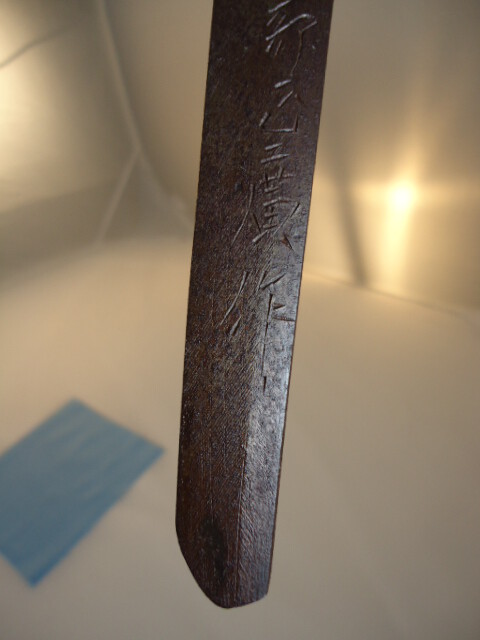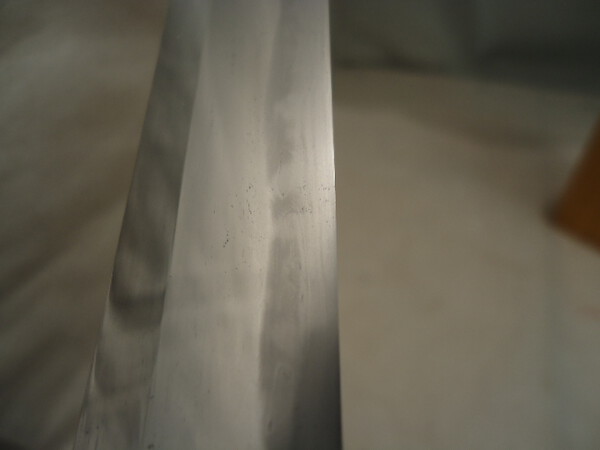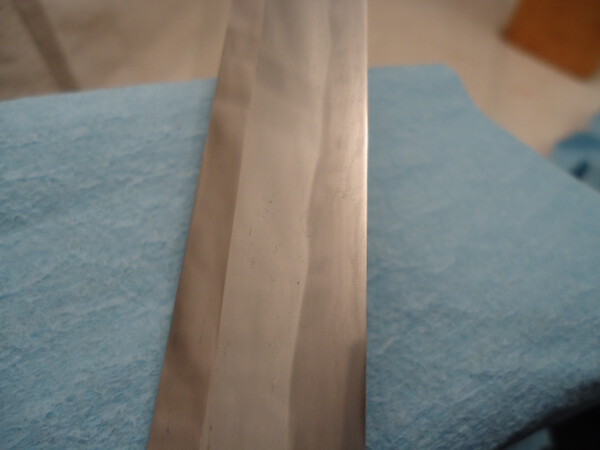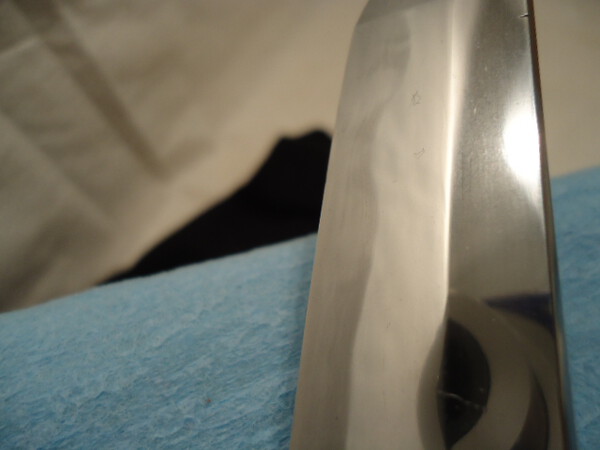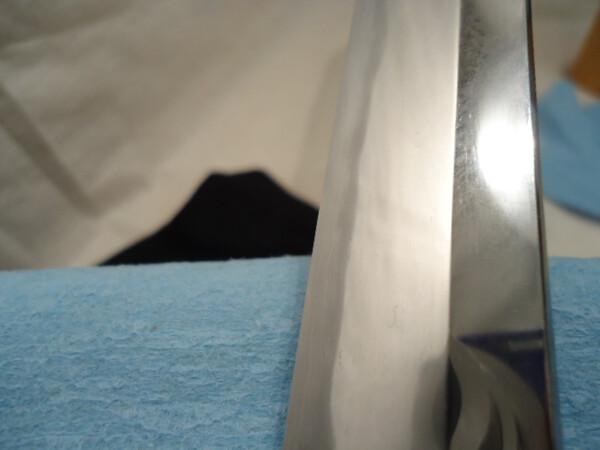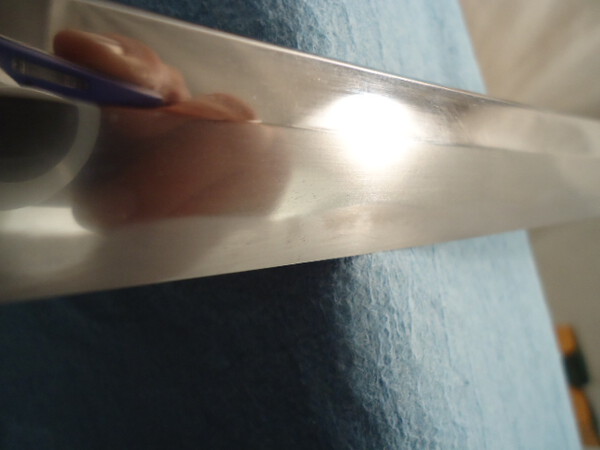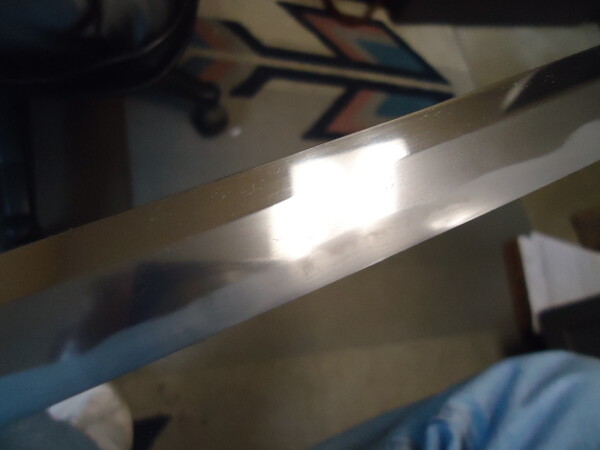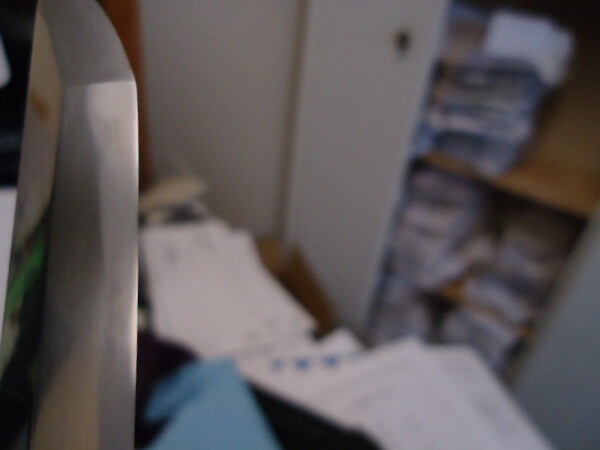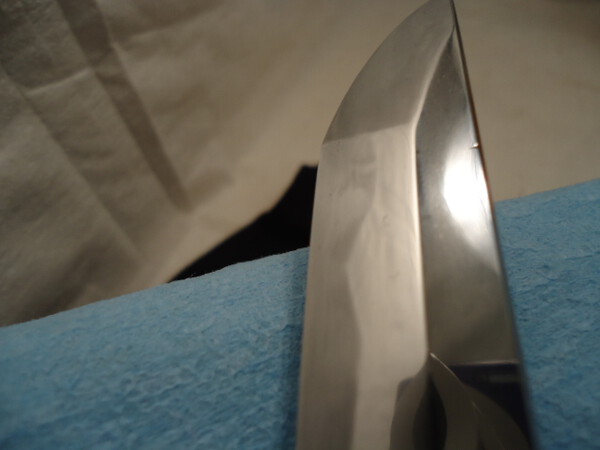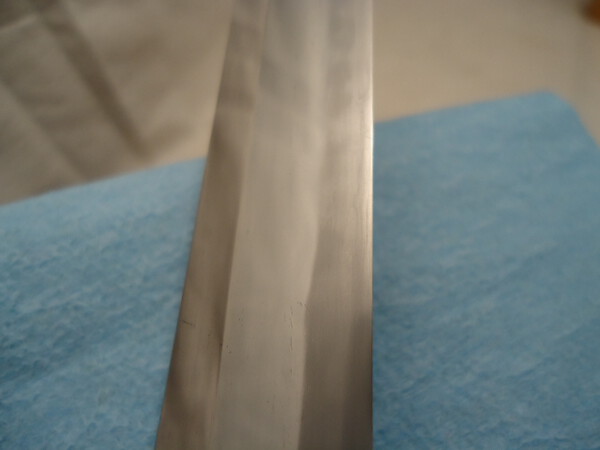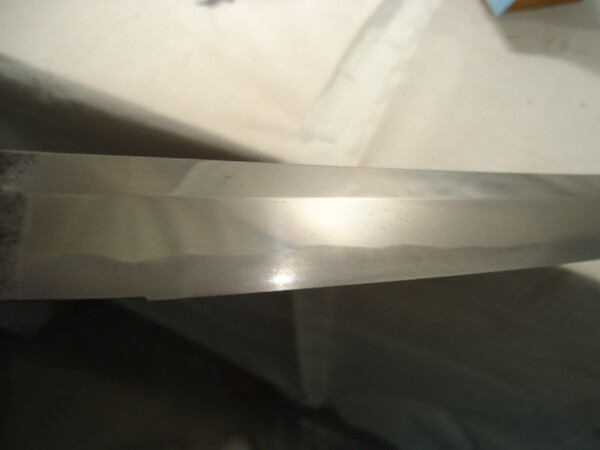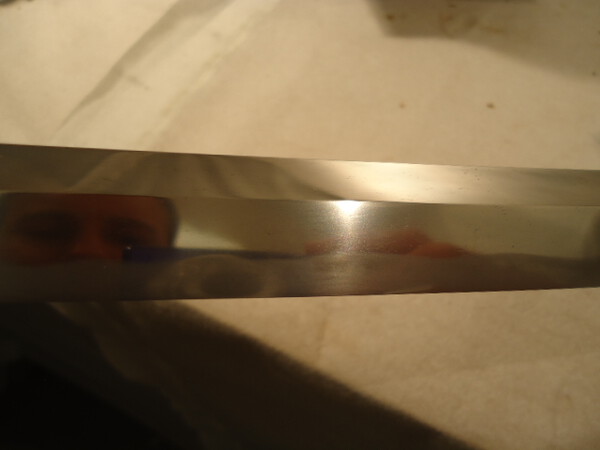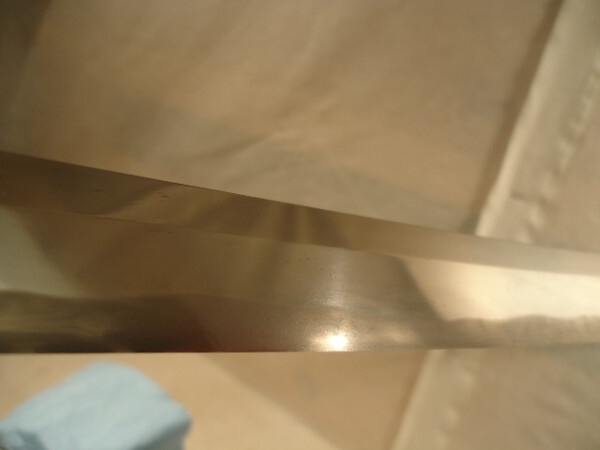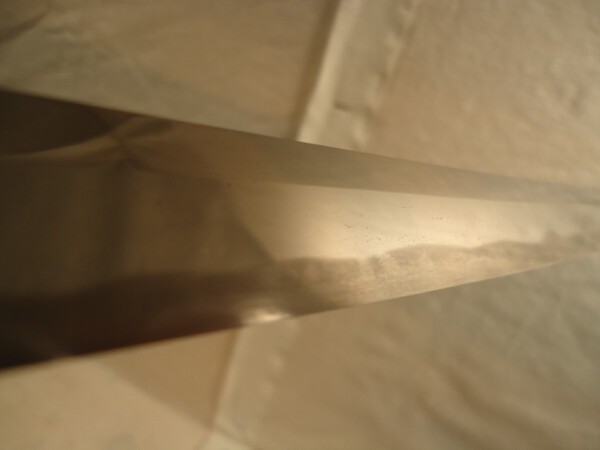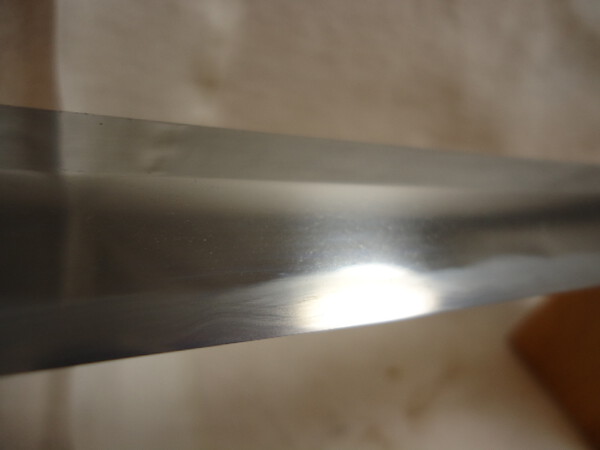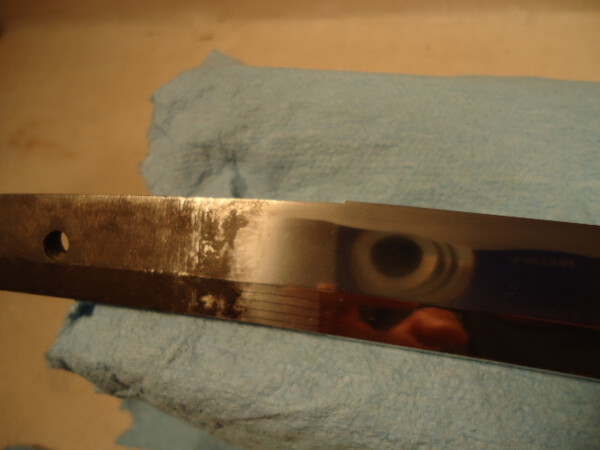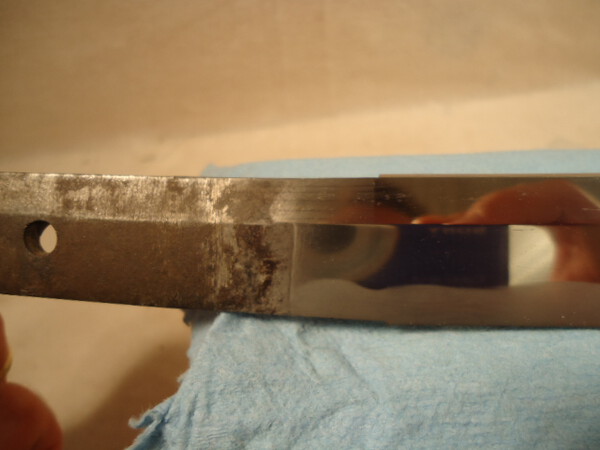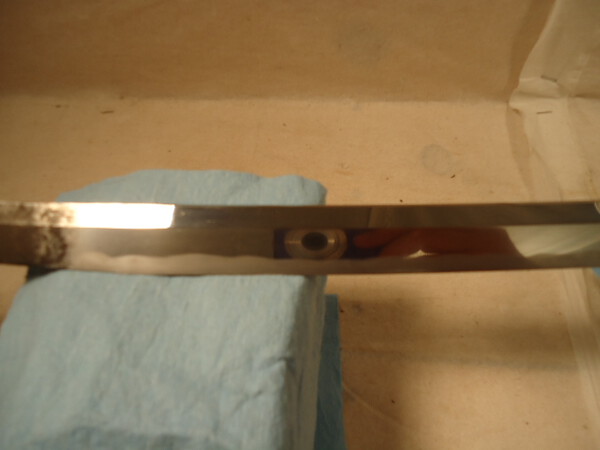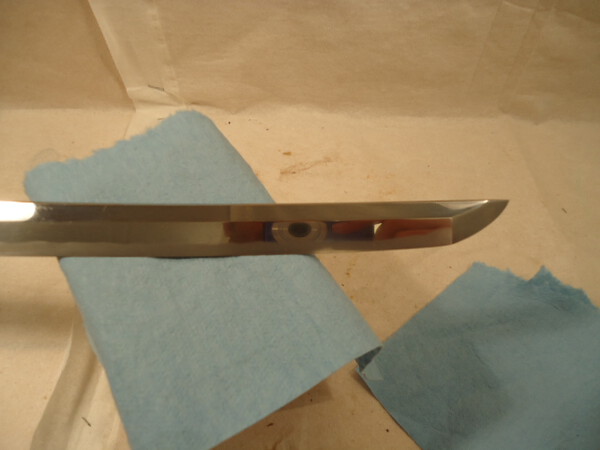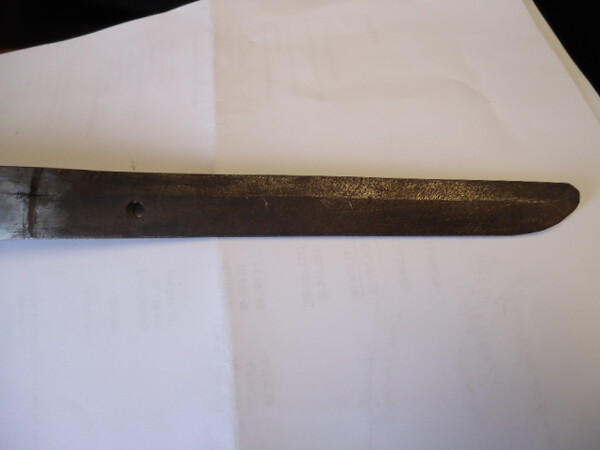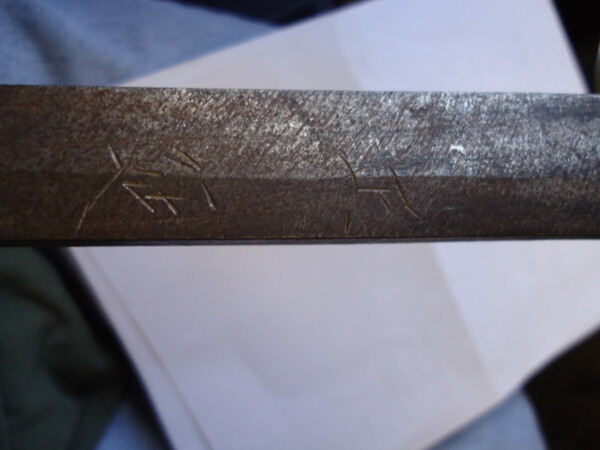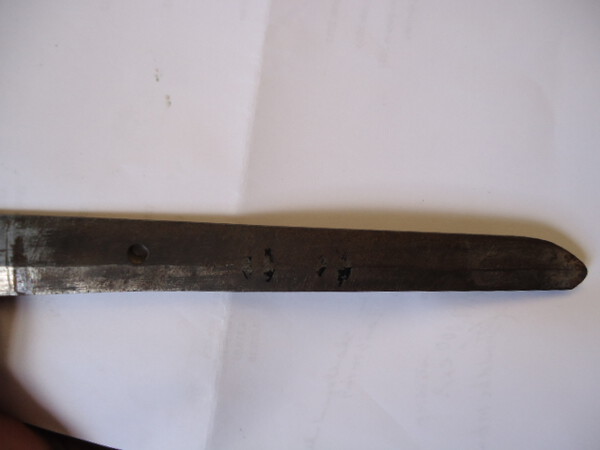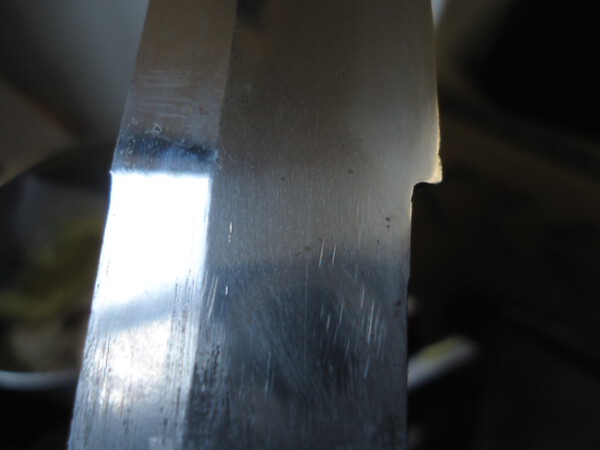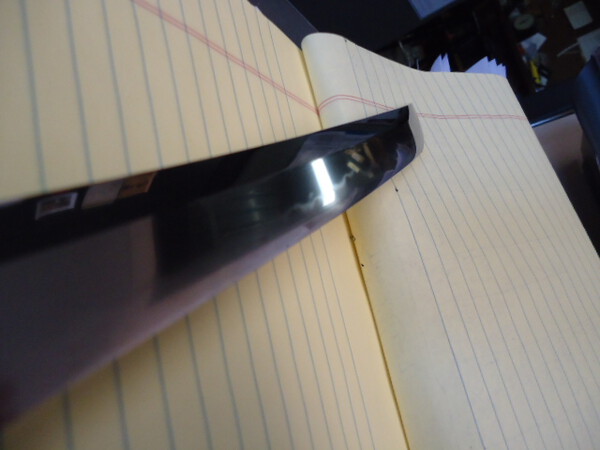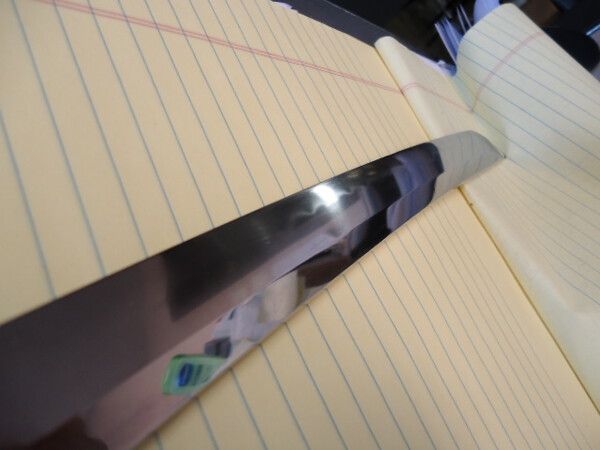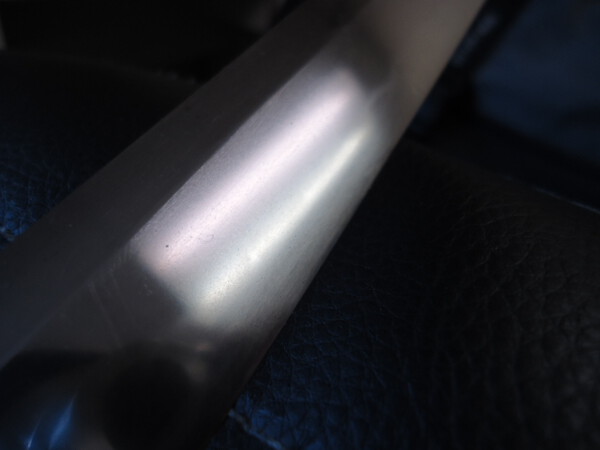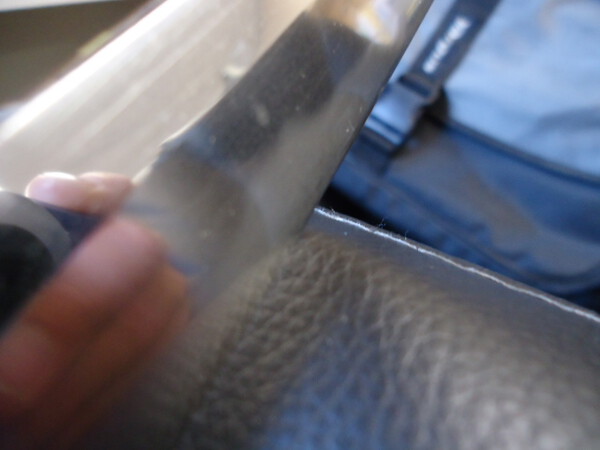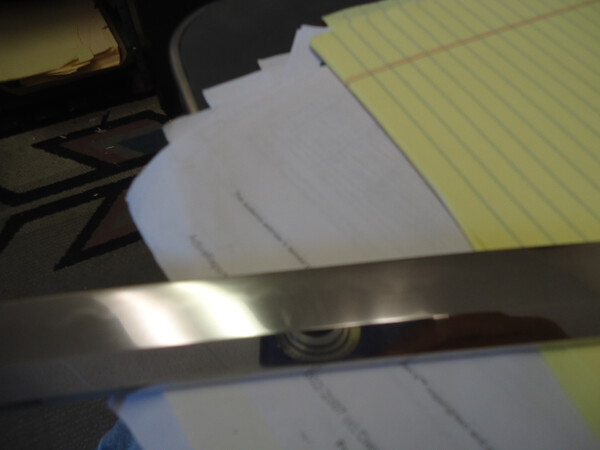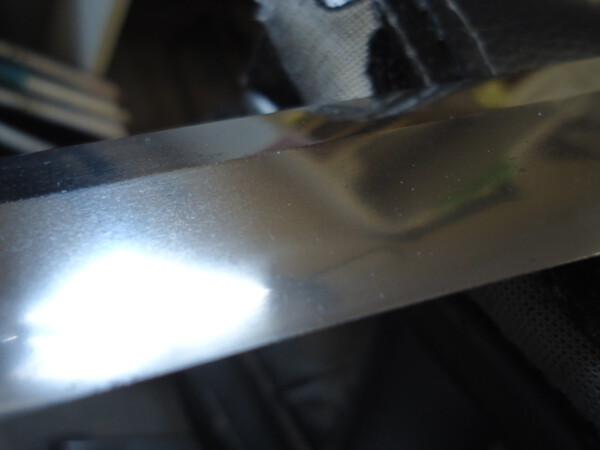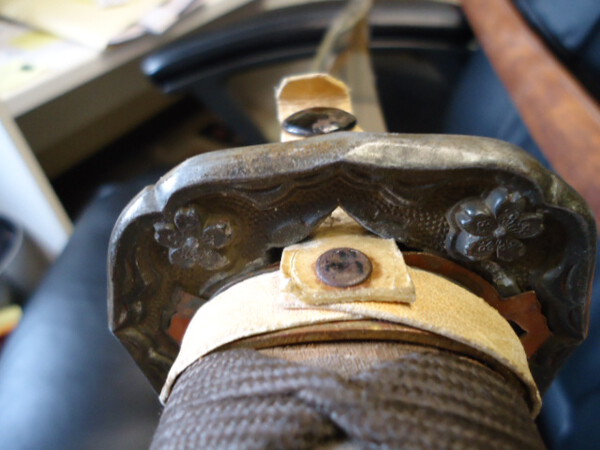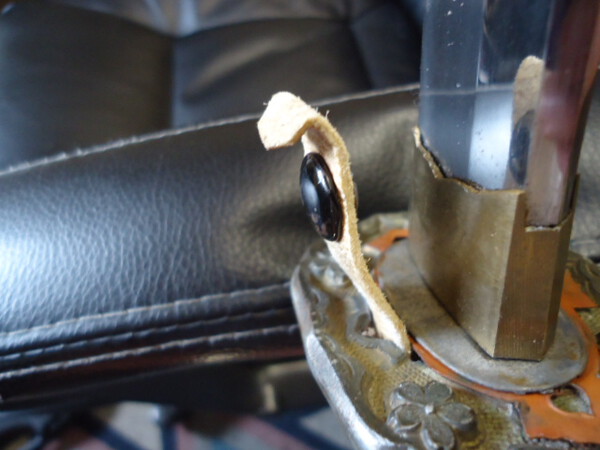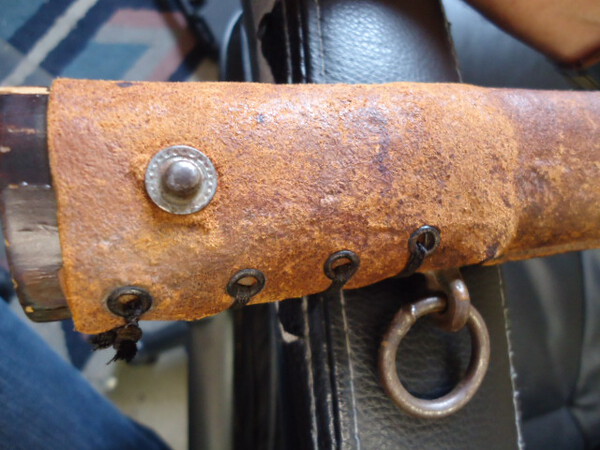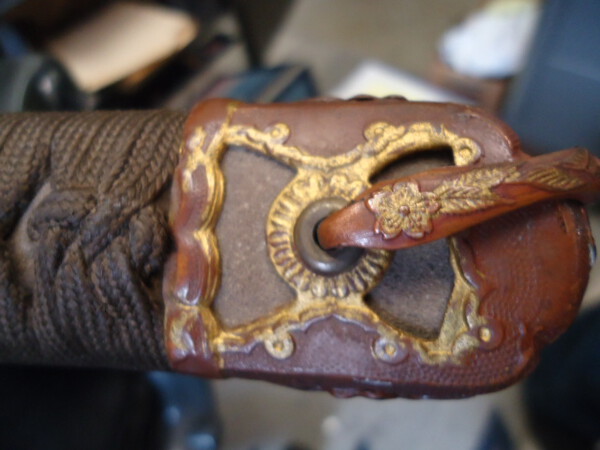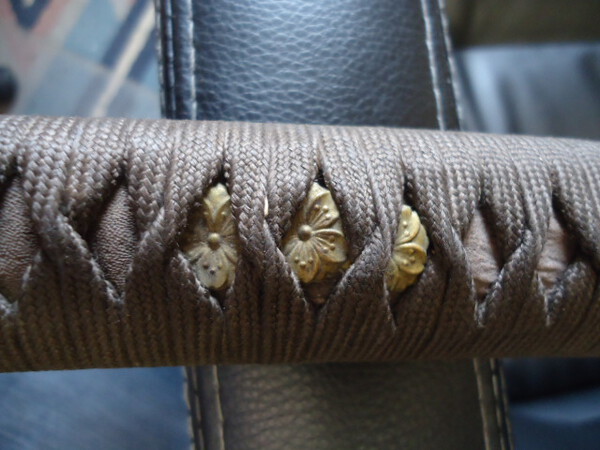
st468
Members-
Posts
29 -
Joined
-
Last visited
Profile Information
-
Location:
Minnesota, USA
-
Interests
WWII German dress daggers and swords, all guns- especially those of WWII vintage, Allach porcelain, and starting to get interested in nihonto...
st468's Achievements
-
Translation Help Needed Kantei Section Of Nthk Worksheet
st468 replied to st468's topic in Translation Assistance
Thanks to all of you who responded, very much appreciated! The only 2 characters I had some degree of confidence that I had figured out were Bizen and Osafune. This wakizashi scored better than I ever expected it would, and also turned out to be older than I originally thought. Now I'm working on trying to translate the worksheet for the other item I submitted to the Shinsa, a very old tsuba which scored 74. This one is going to be even more difficult... Perhaps I'll post that worksheet in a new thread if/when I become completely stumped. I need to get better at translating this stuff my self though, I almost feel like I'm cheating by seeking assistance here. You guys are the best! Thanks again, Kory -
Thank you very much for the information guys!
-
Hi all, I recently picked up a decent kai-gunto, complete and all matching. The blade is not stainless steel and there is no arsenal stamp. The more I look at this thing, the more I suspect there may be a chance it was traditionally made. It's in ok polish with a nice highly visible hamon. Before soliciting opinions about the characteristics of the blade, I thought I'd start with trying to determine the maker. I apologize in advance for the quality of the pictures- I really need to invest in a newer digital camera... Thanks, Kory
-
Chris and Hoanh- Thank you for your thoughtful replies, much appreciated. I will do some additional study and try again at getting some better pictures. Kory
-
Wow, I'm surprised not a single experienced member here has any comment or idea about the hamon pattern and/or any other opinions regarding the questions I've asked throughout this thread (since it was recently revived, that is). I tried so hard to photograph the true hamon after the recent polish (see page 2 of this thread). From reading many other threads here in the forum, it seems that many other "newbies" get quite a few opinions and answers. I wonder if this sword is considered by many to be just junk, and the lack opinions is a result of that (just being nice)? Or else maybe I said something along the way that offends those with the most experience and knowledge in this area? Or maybe the pictures are just not professional enough? Sorry to be a newbie pain in the a$$ here, but I was just trying to learn, and more than likely get hooked on yet another collecting area. I suppose my only option at this point is to try to get it to Chicago next spring, though I'm quite worried about security if I decide to mail it in. Maybe I'll try to make the time to drive over there (I'm in MSP which is not too far). Before I invested in a bunch more books on the subject I simply wanted to feel this out a little bit more. Sorry if I wasted anyone's time.
-
Danny- Thanks for the compliment! I know the conventional wisdom here is to not rush into things until you have studied and learned quite a bit. I dealt with that originally, did some homework (probably not enough), and I finally decided to have my (first nihonto) polished. I'm still not sure how good of a piece it is, but I know it's koto and I really like it. I figure the gold content alone (3/4 oz or so between the habaki and seppas) is worth at least as much as I paid for it to be polished and have the shirasaya made. So if the blade is worthless I am still good... Though I think the blade looks great in person, it is priceless to me, and I'm extremely happy with the polishing service that Kunitaro san offers. If/when you are ready to have yours polished, I strongly recommend you contact Kunitaro san (check in the for sale and services section of this message board). Good luck, and please post pictures and info if/when you learn more about your sword and/or have it polished. Grey- Thanks for the info about the saya, very much appreciated. I think it is a very interesting pattern, and I've wondered about it since acquiring it, though my first concern has been the blade. The koshirae will be my next focus once I can finally learn more about the blade. Is the koshirae koto period also? Tsuka in bad wrap, missing the menuki, but otherwise sound. Strange/odd/crude (very old?) tsuba? Thick gold foiled habaki and seppas, nice pattern to the habaki (not so generic). Do you have any comment on the hamon pattern, blade shape, etc.? I know mumei wakizashis are the most abundant, and are the least interesting to advanced collectors, but this one is o-suriage and exhibits some features that at least to me, are more worthy of interest than the typical E-bay garbage. Was this an old long tachi cut down? A koto wak by a no-name smith? I really wish I had the opportunity to get a better opinion form the master polisher, but the timing did not allow. It was already packed up and waiting for export paperwork when I raised my questions. Anyone else care to chime in? Don't be shy, you won't burst my bubble, good or bad is just fine with me... Thanks, Kory
-
-
Nathan, Excellent how that Kissaki turned out, your sword really looks great, probably a bit healthier than mine from what I can see. Please post more pictures when you get the chance... General followup: I've taken some more pictures trying to better capture the true hamon. This is about the best I can do with the cheap camera I have at this time. I'm hoping some of the more experienced members here can help me learn more about the hamon, and when it may date to approximately, and/or learn what school/smiths produced this type, or at least point me in the right direction for additional study. It is a quite narrow hamon and very varied in shape and width. It is quite complex and beautiful in-hand, and it's extremely easy to see in person without manipulating the blade in different light- unlike in the damn pictures! I think it is some sort of choji, but in some spots it is almost suguha (see picture 3028 for an example). In some spots it looks like it is made up of little "clouds" and oblong shapes, and in a few areas these "clouds" appear slightly above or slightly disconnected from the actual temper line. Also as hopefully can be seen in the pictures, there is a wood grain pattern evident throughout most of the true hamon. It is a different pattern/grain than is apparent in the ji. Sorry for taking up so much space with all these pictures, but hopefully somebody sees something they recognize in at least one of them and can offer me some insight. Thanks! Kory
-
-
Hi Geraint, Thanks for your post. I definitely plan to restore the koshirae. I plan to either have made, or make myself, a tsunagi and have the tsuka professionally re-wrapped once I can find some suitable menuki to go with it. I may have to send the saya to a pro to have the lacquer touched up, as I'm afraid I would do more harm than good trying it myself. That's a good idea trying to make an oshigata. I'm not the best at drawing though... I'm posting some more pictures in an attempt to show the hamon and hada, and I'm having a heck of a time getting what my eyes see to actually come out in photos! Also I'm wondering if it would be a waste of time and expense to try to get the blade papered at the upcoming shinsa in Chicago? Opinions? Thanks much, Kory
-
Now to resurrect on old thread... The wak discussed in this thread has now been polished in Japan and returned to me. I used Kunitaro san's service (a respected member here) and I am very pleased with the results. I have posted a few post-polish pictures in the thread here on this board which discusses Kunitaro san's service ( viewtopic.php?f=4&t=17115&st=0&sk=t&sd=a&start=45 ). I plan to take better pictures very soon under better lighting since these first pictures are quite poor and taken under commercial fluorescent lighting, and I will post the better pics here ASAP. Unfortunately I didn't get a whole lot of opinion/kantai from the master polisher due to the timing, but what I did get was this: He said the blade is Koto period and O-suriage. Also it was said it is of "high quality" and it has seen many polishes. Being that the recent polish done was modern style (hadori), I think it somewhat masks a different type of hamon beneath. I think it may be some sort of choji, and I will try to better capture this in the new pictures to come. It is easy to see when the blade is in-hand though. As far as flaws go, besides the (maybe/probably) blade strikes, there is a very tight ware about an inch long just above the real hamon on the left side, about mid-blade. It is not extremely noticeable though. Other than that I think this is a pretty decent blade, other than maybe it's a little bit tired. It certainly is razor sharp! I will never sell this one, so it is not a monetary value I am interested in, rather just opinions of age/date/school/history. I just want to know more about it as I am still quite a greenhorn in this area. Was this an old, long tachi cut down? How old? Any and all opinions, good or bad, will be greatly appreciated, and as I said I will post additional pictures here as soon as possible. Thanks in advance for your patience and understanding considering my inexperience. I'm sure the "newbies" here can get quite annoying to some of you... Thanks, Kory
-
-
I'm still not quite sure what to think about this blade. Here's some more pictures, hopefully they show something more definitive to one of you guys who has much more knowledge than I. No arsenal stamp on tang, I do see tight grain, temper line is inconclusive to my untrained eyes. Is it oil quenched? Is the blade machine-made? The blade is out of polish and/or of wartime quality polish so I don't think that helps things much. On this board I realize the WWII era blades seem to be generally looked down upon and all are considered pretty much worthless/non-art unless they are signed by a famous well-known maker. Being that this blade is not by a famous or well-known maker, I hope I'm not wasting my time or anyone else's here. I may consider getting a finish polish done on it, that is if I decide to keep it. I don't really care how much it is worth, nor would the polishing cost really matter, it would be simply for a better looking display piece. Or if the blade is indeed trash, and the more rare through-tsuba snap thing makes it more desirable to a militaria collector, perhaps I'll flip it to one of them so I can acquire more Allach porcelain which has been the focus of my latest collecting spurt. Thoughts? Thanks, Kory
-
Here are a few more pictures. I will try to take some better quality pictures of the blade soon and post asap. About the maker- I read on a Japanese sword index website that there is a "Hizen kuni Masatsugu" which is known to have made gendaito of WWII vintage. Apparently this maker made blades which were papered by NTHK and/or NBTHK. Same maker? I have no clue... Thanks again to everyone for the excellent information. Kory




